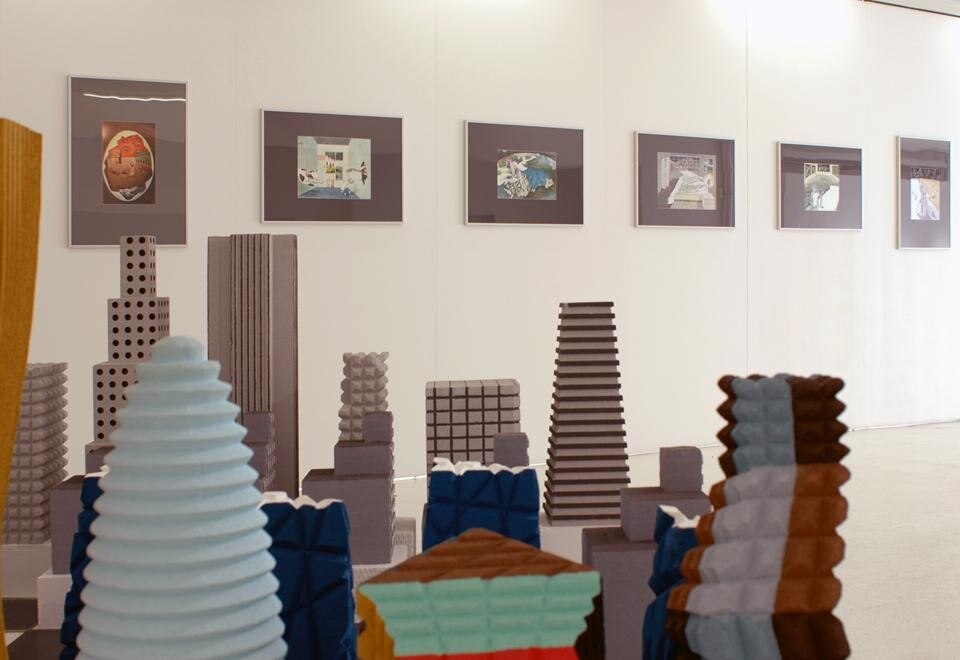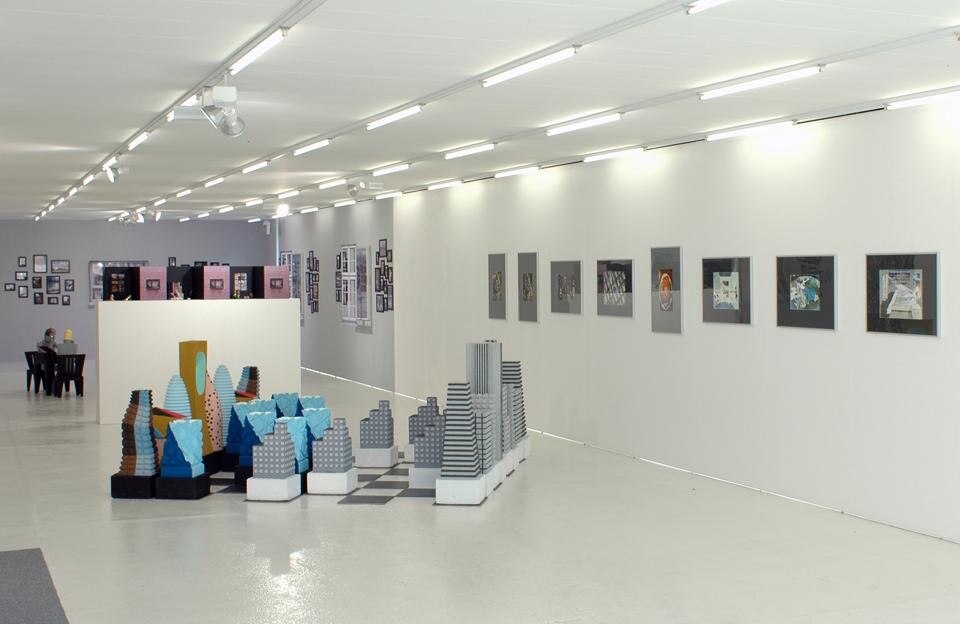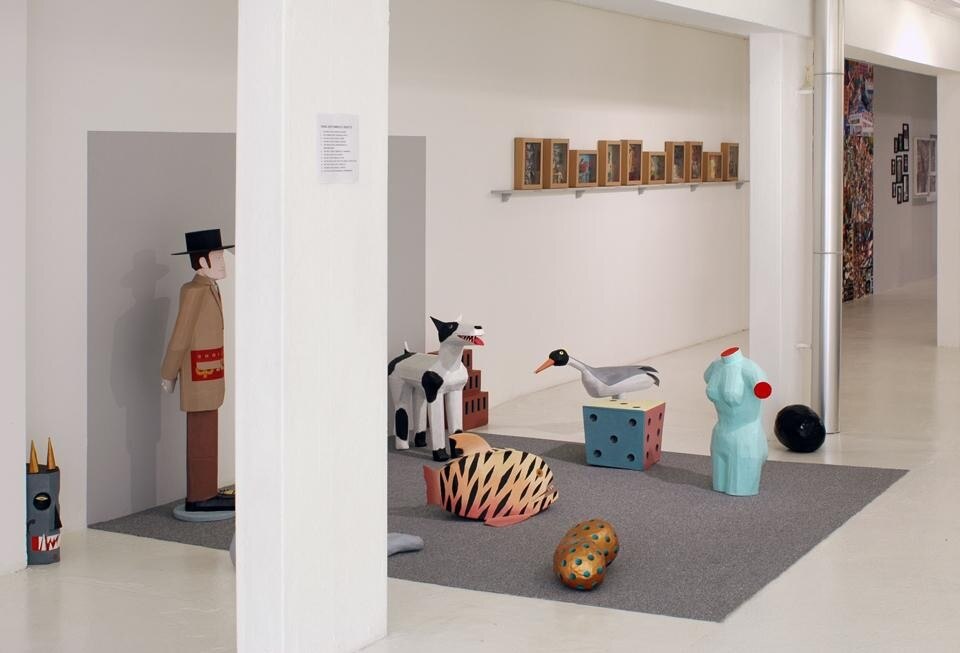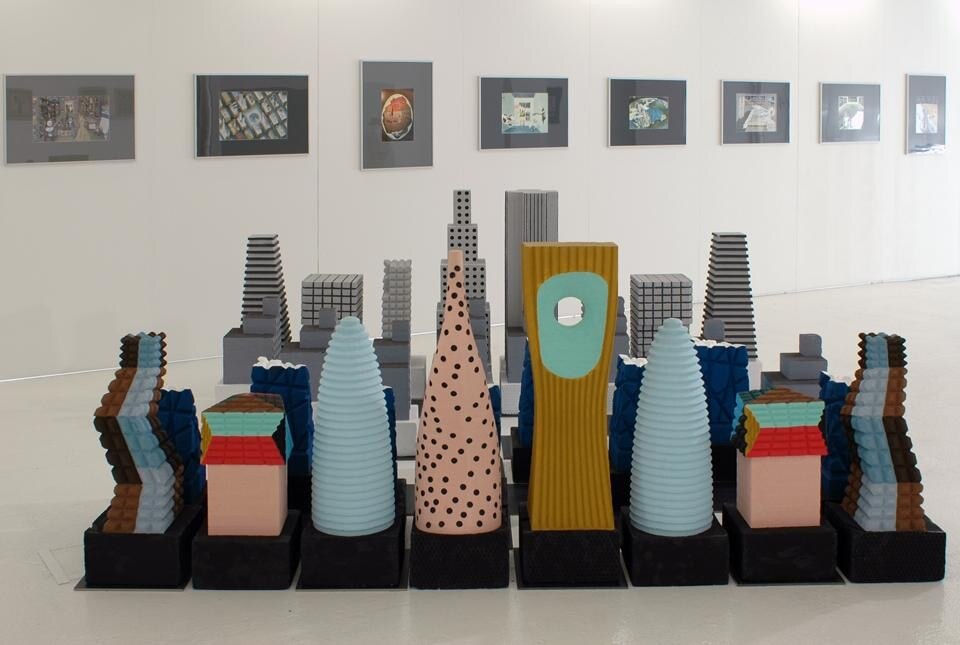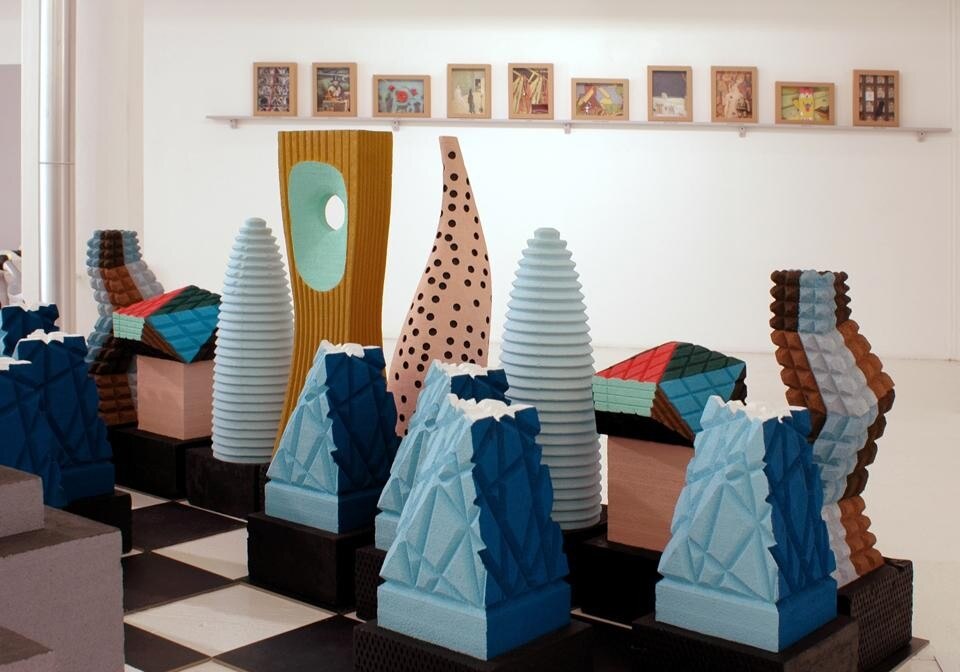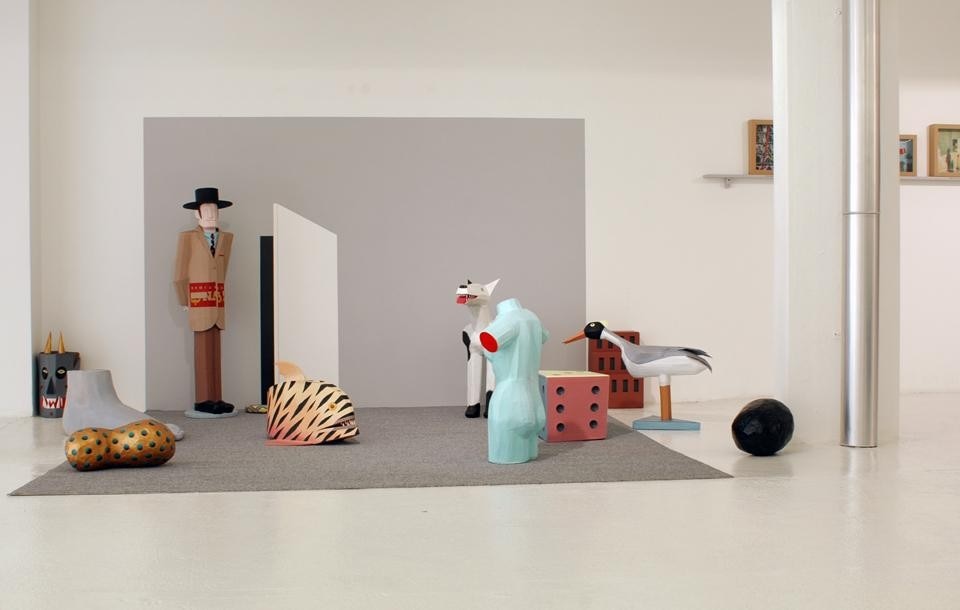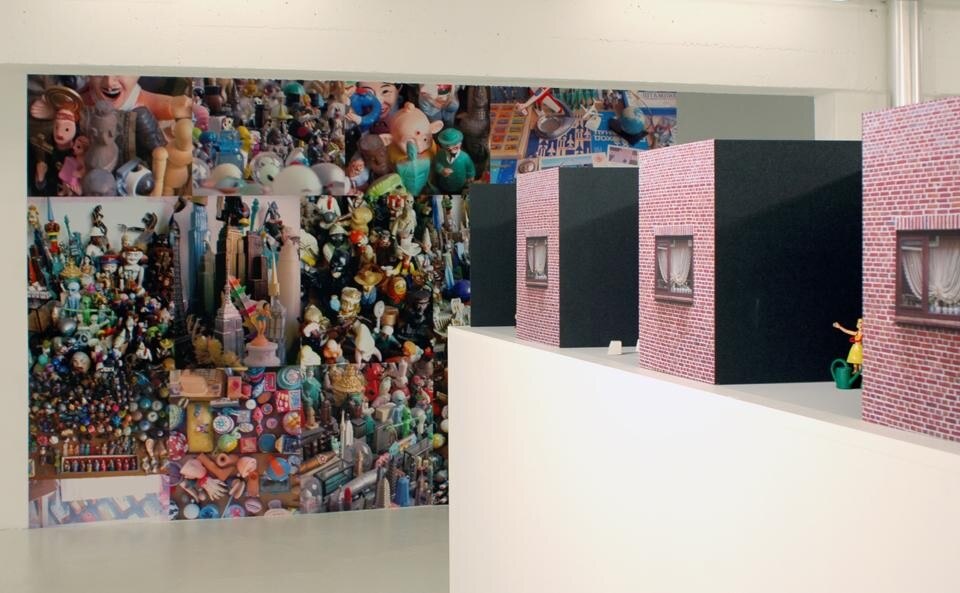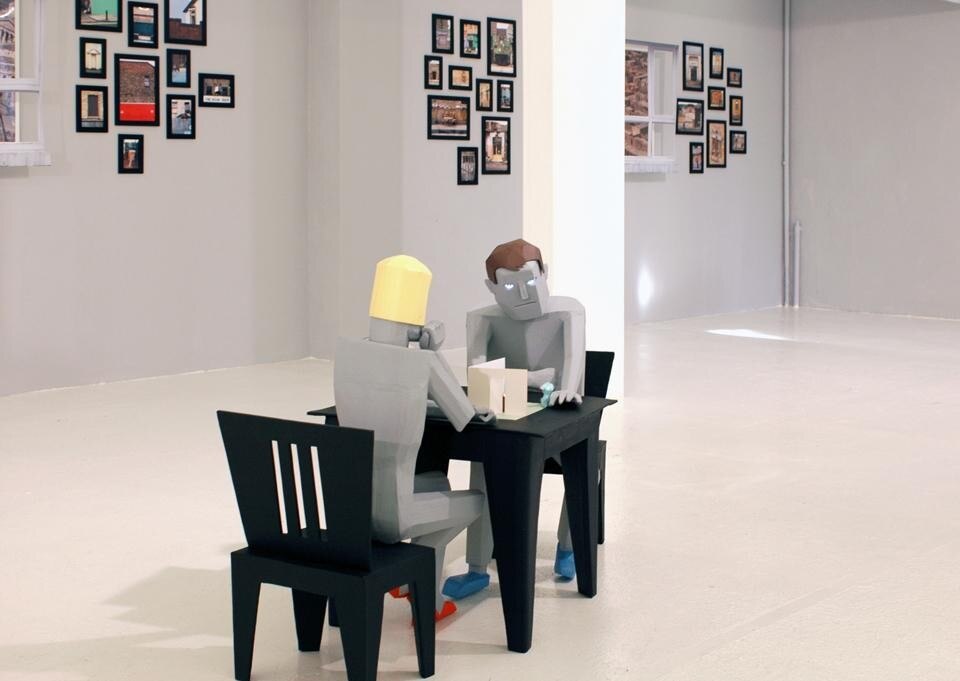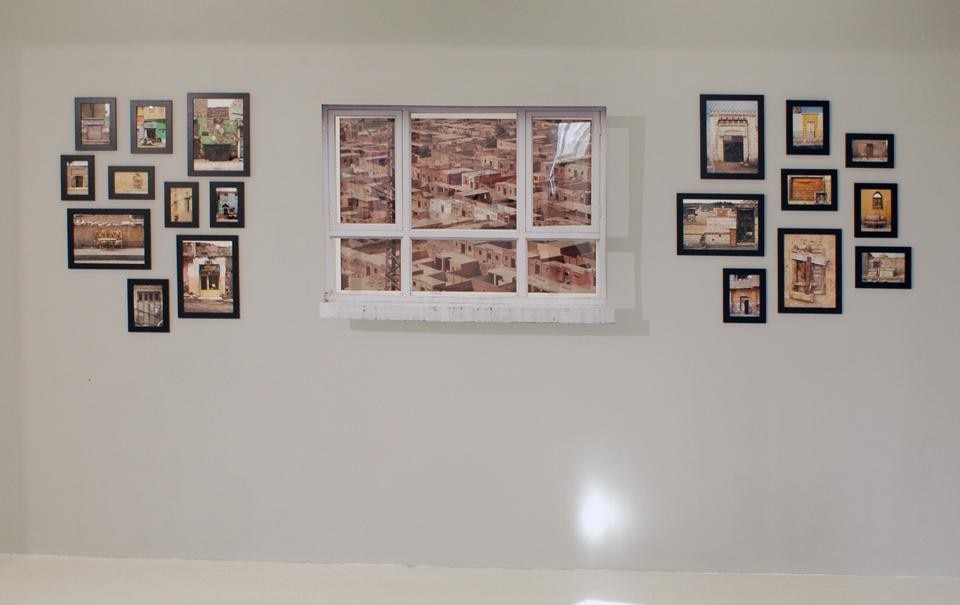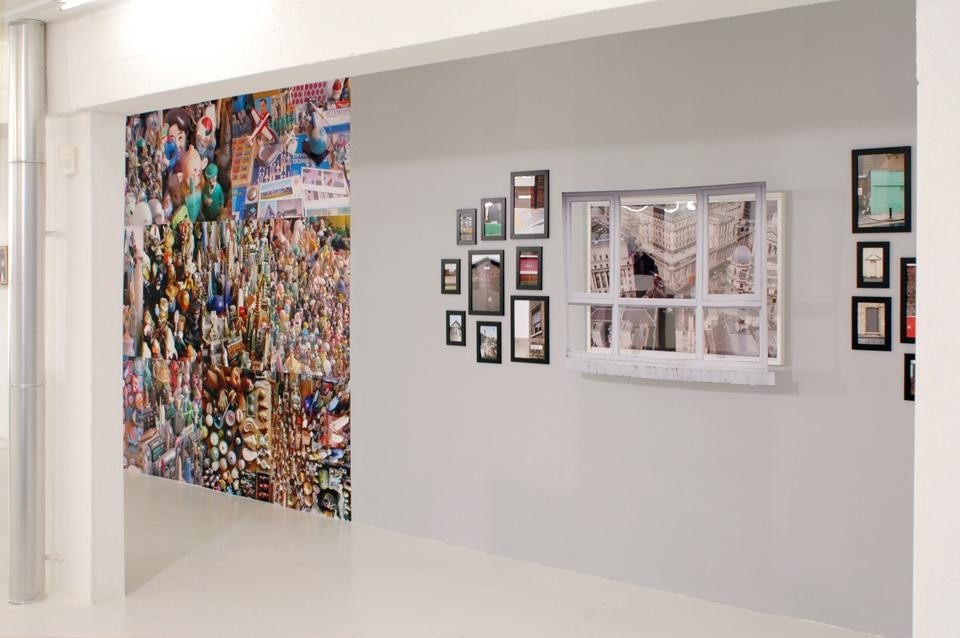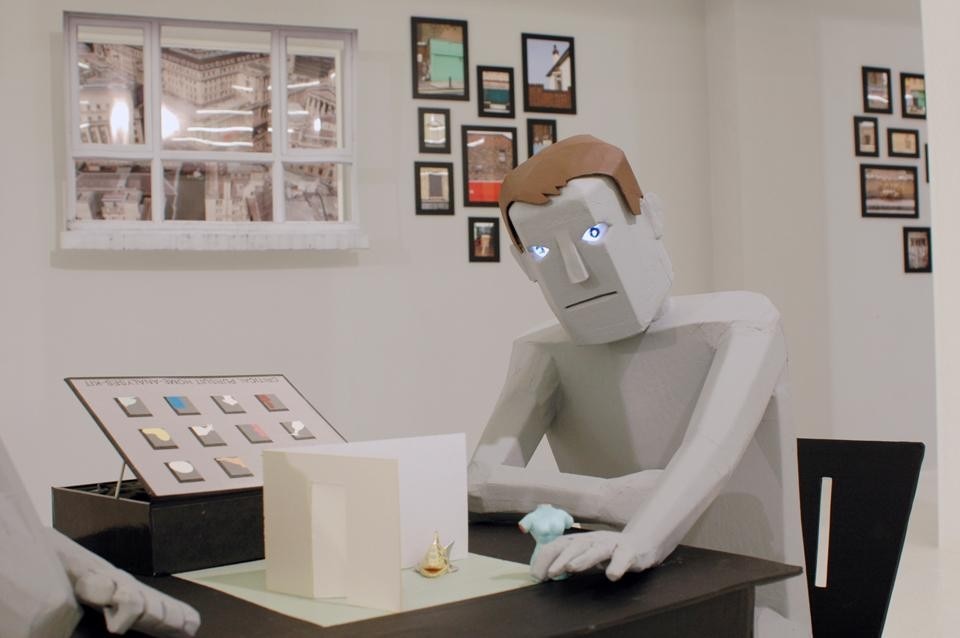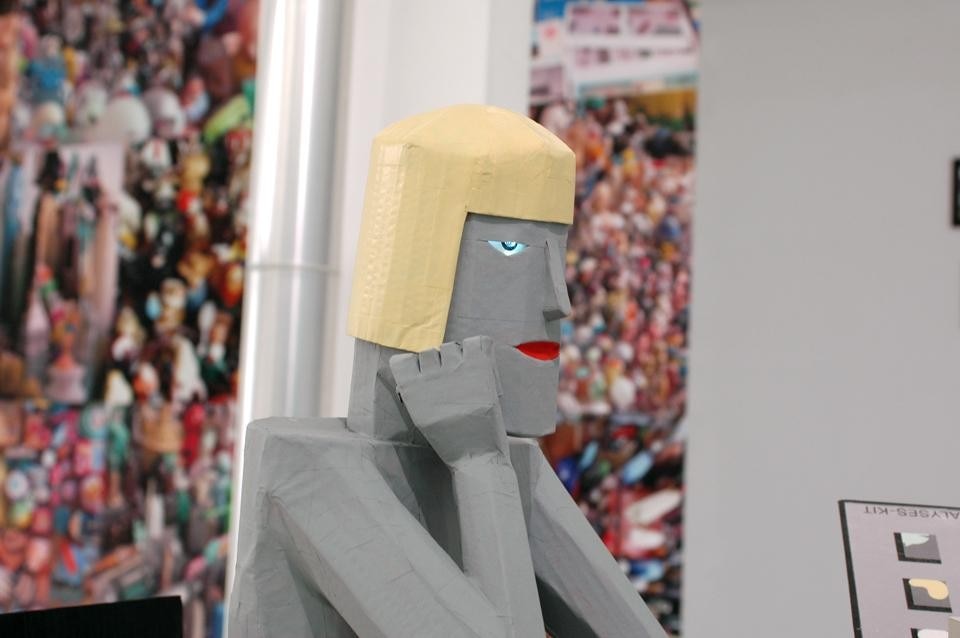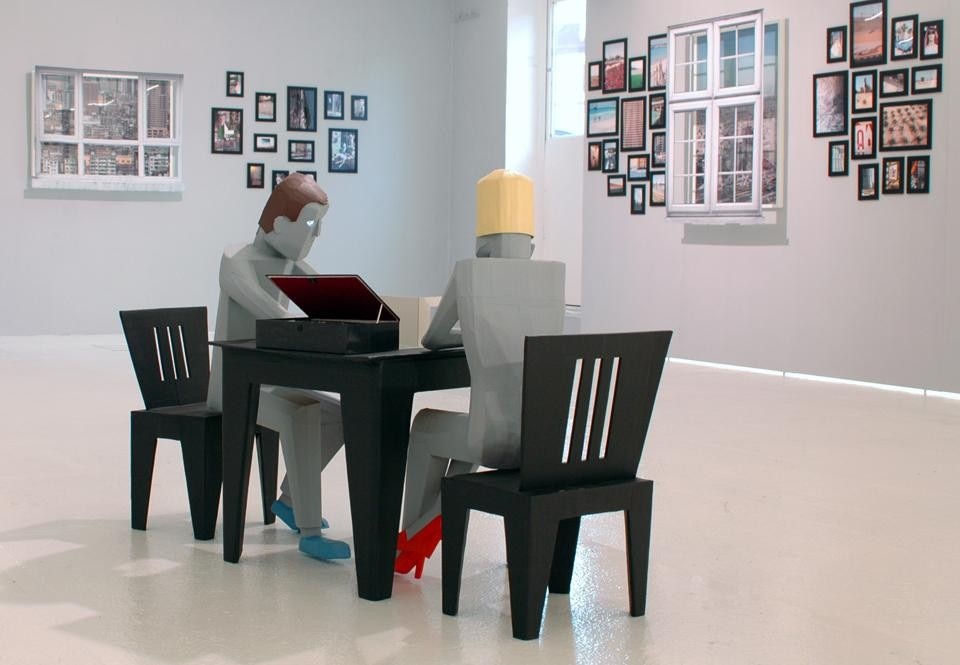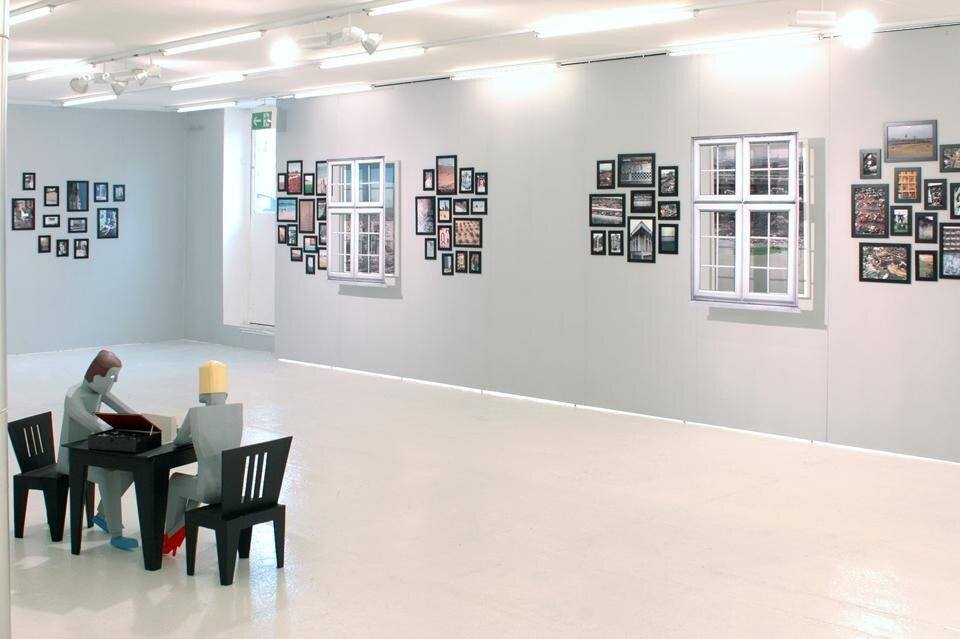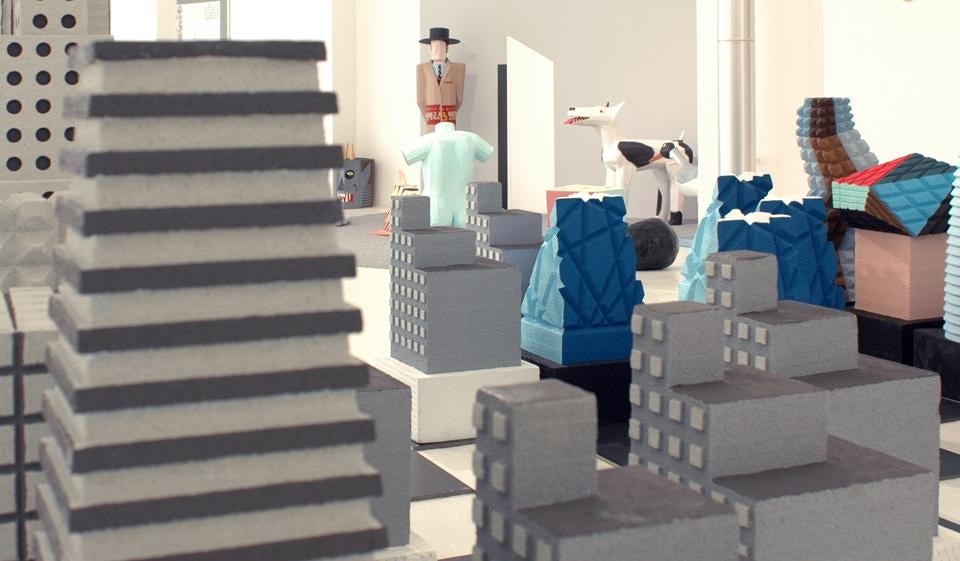"Room for Thought" is the title of the show that we describe today. They are the authors. The first thing that strikes the visitor is the mysterious exchange that they imagined with the space in which they set up the show - a gamble for which they received at least as much as they gave. It is a complex organization of whispered games without ever uttering the word "I" except when doing so could influence "us." The harmony of the forms of expression (photography, sculpture, mysterious boxes in a totally surrealist spirit that are absolutely delicious) is striking. The choice, as immediate as it was risky, to open to the exterior by drawing volumetric frames, suspended above some photographs, which confer upon the whole the form of the window, surprises; we are in an ideal and wonderful room from which to observe the world and where the world itself can drop by and observe us. It can be observed thinking of the exterior, but it can also be discovered through both Madelon's sculptures and objects as well as Charlie's photographs and assemblages. The photographs, displayed with intelligence, do not disappear, but on the contrary create very rapid mental associations, melding and disintegrating based on whether they are viewed on their own (this can happen for a few seconds), as a set (at first sight is the most natural reaction), as isolated or in dialogue with Madelon's forms (this step is absolutely obligatory in light of the empathy that flows between them). Instant connections, sudden sensations, singular encounters with objects that are, for us, both familiar and distant.
This game between the intimacy of a room and the surprise of the world continues; first of all because they return in a series of small seemingly Mexican-inspired characters, countless variations on controversial heroes from contemporary iconography, and secondly because photographs and objects do not cease to amaze and question the way we mix cultures, forms, singular ideas, ideal cities. Echoes of history are not missing; they are obtained through the invention of "divertissement" similar to those of the best surrealists and atmospheres that are, in some cases, Magrittian almost to the point of losing the substance of the various levels of the visitor's gaze. Management of the signs (here often observed volumetrically) in the installation might refer to the improbable grace of some great illustrators and draftsmen (such as Steinberg). A wall or a door, a body, a glance - all photographed - collide with this or that mysterious object positioned by Madelon, changing the way we look at it (and vice versa). Judging and integrating what strikes us can come about extremely quickly, as was said, in consonance with certain folk traditions. All absurdly alive so that invention and discovery become pleasureful dialogue with the world. Federico Nicolao
Room For Thought with Madelon Vriesendorp & Charlie Koolhaas
Lucy Mackintosh Gallery
7 avenue des Acacias, Lausanne
